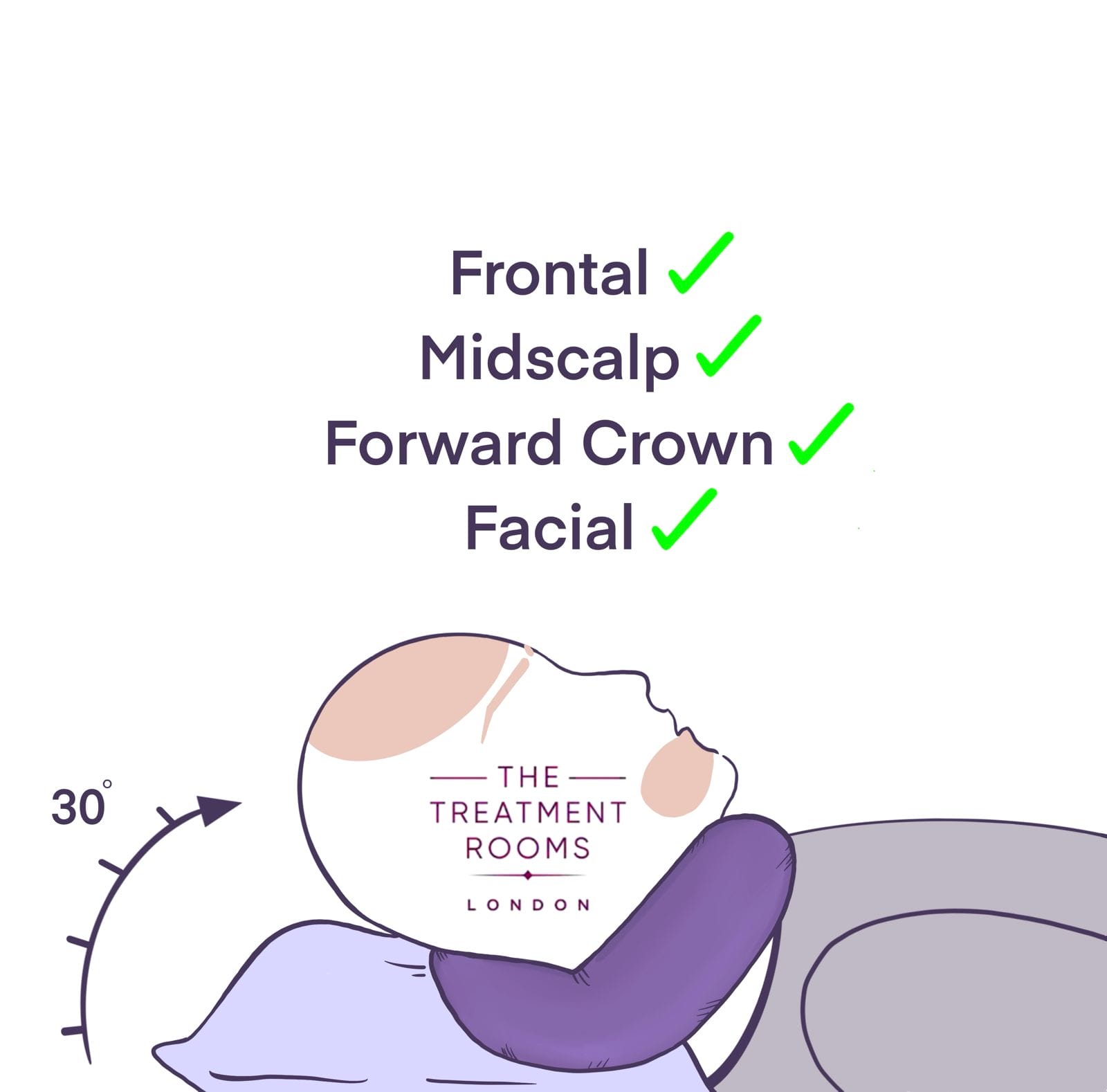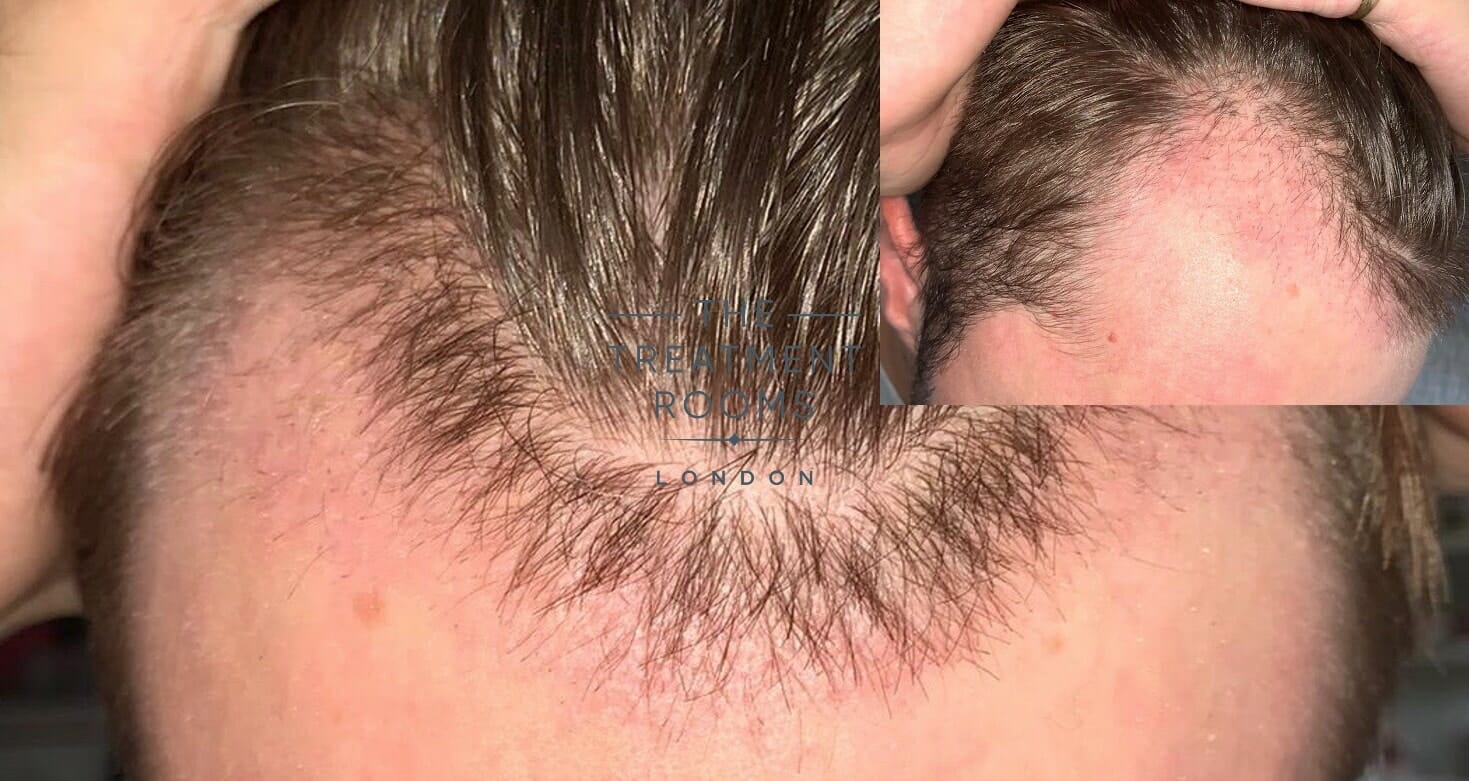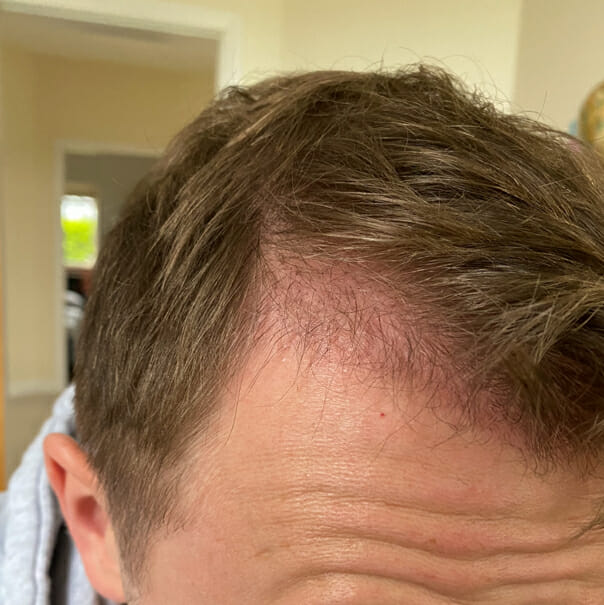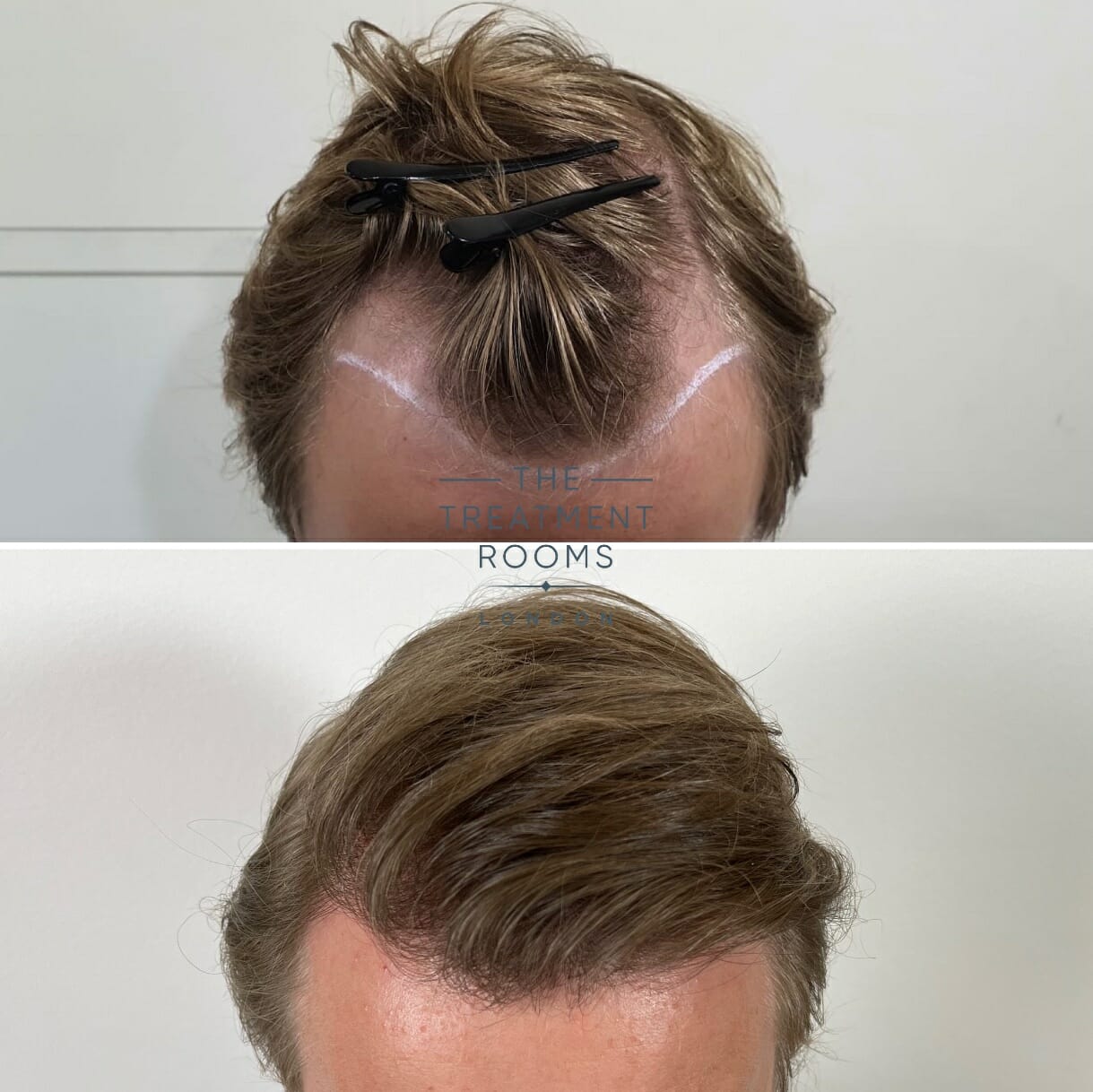At 1 month after a hair transplant you can expect your newly implanted hair in your hairline or crown to start falling out. You may also have some mild redness present where your newly implanted hairs have been placed. The rest of your scalp should have healed entirely by this point although you may report some itching in your donor area.
It is important to note that 1 month after your hair transplant, your scalp would have healed slightly differently depending on whether you have had an FUE or an FUT hair transplant.

1 Month After FUE hair transplant surgery
After 1 month, you would have recovered almost entirely following an FUE hair transplant. As the surgery is minimally invasive, your donor area would have healed entirely. You may report some mild itching in the donor area and this can be normal.
Your recipient area will look slightly red or pink in colour and your transplanted hair will have started to shed. This is normal and the shedding can last 1-3 months. After 4 months, your hair will start to grow gradually.
1 Month After FUT hair transplant surgery
After 1 month, you would have recovered well following an FUT hair transplant. As the surgery is more invasive than FUE surgery, your donor site’s surgical wound may still feel a touch tender. It will almost have healed entirely. If you are worried about the area not healing then please contact your hair transplant surgeon who can advise accordingly.
Your recipient area will look slightly red or pink in colour and your transplanted hair will have started to shed. Like in an FUE hair transplant, this is normal and the shedding can last 1-3 months.
Post-surgery care for your hair transplant for the 1st month
Following your hair transplant, it’s vital that you take good care of your scalp. One of the most important things you should avoid is touching your scalp or hair during the first few days post-surgery, as the transplanted grafts are still embedding into the scalp during this time. It takes 2 weeks for the hairs to fully secure into the scalp and you read more about this topic in our dedicated article here. You might have to sleep in an elevated position using a neck pillow for the first few days to keep any pressure off your head. This is shown in the diagram below.

During the first two weeks, it’s also advisable to avoid any strenuous exercise or work, to reduce any risk that can be posed to your transplant during these activities. You’ll also need to avoid using the power shower post-surgery, and avoid exposing your head to direct sunlight for the first 2 weeks after having your hair transplant.
Our clinic will advise you when you can start washing your head again. This usually takes place after 4 days have passed. This process can help the scabs formed after the transplant to soften and wash away safely after around two weeks.
After about two- three weeks, the redness from your scalp area should have subsided. It is also at this point that you may start to notice your transplanted hair shedding.
Reaching 1 month after hair transplant surgery
When you reach the 1 month mark you aren’t likely to experience any new hair growth. Instead, you are likely to start seeing your hair shedding. This is a completely normal part of the process, where the transplanted grafts enter a sleep phase and shed themselves, getting your scalp ready for a new growth cycle to begin with the new hair.
You may also see a slight pink tinge to your skin where you have had your operation- particularly if you have a lighter skin tone. This is seen in the image below where the patient has mild redness and his transplanted hair has started to shed.

When will your hair start to regrow?
Typically, around month 3 or 4 following a FUE hair transplant procedure you should start to see new hair growing through. In some cases, it may start a little earlier than this. Regrowth may start slowly at first, but will steadily increase as the months go by, with around half of the results achieved by about six months. It may take a further six months or so to achieve the full effects of the procedure. You can see a full hair transplant timeline on our website by clicking here.

It’s important to keep in touch with your hair transplant clinic following a hair loss procedure to ensure healthy healing and recovery is taking place. Our Surgeons are experts in ensuring their patients recovery and aftercare goes to plan. If you are interested in having your hair transplant with them, please don’t hesitate to contact us today.

Share:
Authored by
Reviewed by
Book a Consultation
Related Blogs
When Can You Safely Wear a Beanie After a Hair Transplant?
July 3, 2025
Quick Summary Cap Recommendations: Light, breathable caps, such as snapbacks or trucker hats, are advisable if you need…
Castor Oil (Ricino Oil) for Hair Growth: Benefits, Uses & How to Apply for Maximum Results
June 26, 2025
Castor oil, also known as Ricino oil, is extracted from the Castor bean plant (Ricinus communis). During…
What is a Hair Transplant? How it Works, Success Rate & What to Expect
June 23, 2025
Hair transplantation is a cosmetic surgical procedure that restores hair by moving healthy follicles from one part…
John Cena Hair Transplant
May 14, 2025
John Cena, a common household name, is a figure who has effortlessly straddled the worlds of professional…
Kyle Walker Hair Transplant: Before, After, and His New Hairline
May 12, 2025
Kyle Walker is known for his defensive skills at Tottenham Hotspur, Manchester City, and in the England…
Celebrity Hair Transplants: Full Before and After Analysis
May 8, 2025
Elon Musk Hair Transplant Elon Musk, the billionaire behind Tesla and SpaceX, is well-known for his innovations…
Lewis Hamilton Hair Transplant: Before, After, and His New Hairline
May 7, 2025
As a top-class racing driver, Hamilton is used to wearing a race helmet. While this does protect…
James Nesbitt Hair Transplant: Before, After, and His New Hairline
May 6, 2025
James Nesbitt, the Northern Irish actor famed for his role as Adam Williams in the British comedy-drama…
How Many Hair Grafts Do You Need For A FUE Hair Transplant?
May 3, 2025
An Follicular Unit Excision (FUE) or FUT hair transplant are 2 main procedures available to address hair…











